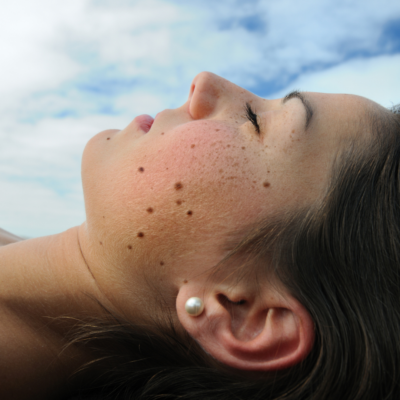‘Tis the Season to be Extra Careful About Burns
Chestnuts roasting on an open fire – ouch! It may be the most wonderful time of the year but sometimes people get so busy making merry that they can get careless and accidents can happen. Burns are one of the most frequent accidental injuries that can occur over the holidays.
The Difference Between First, Second and Third-Degree Burns
First degree burns hurt. Make no mistake about that. But they generally do not require a trip to the emergency room. The skin is reddened and painful like a sunburn but not broken or blistered. It affects only the top layer of skin, the epidermis.
Second degree burns damage the dermis, the second layer of skin, as well as top layer. Blistering can occur in more severe second degree burns and the skin under the blisters appears pink and moist. Or there may be no blisters and the skin may appear paler than normal.
Third degree burns severely damage all layers of the skin. Blistering is highly likely with the skin underneath ranging from pink to dark brown. The skin may appear charred or leathery. Third degree burns may not hurt because damage to the nerve endings can cause numbness.
When to Go to the ER
Although some online medical sources say you do not need to go the ER for a second-degree burn, we at the California Skin Institute (California Skin Institute) believe that if there is blistering and/or breakage of the skin, the burn should be evaluated and treated by a medical professional. It can be difficult for an untrained eye to discern between a second and third-degree burn. Also, if the burned area is larger than the person’s palm, it is best to seek immediate medical attention.
If a person is wearing clothing made from synthetic fabric like polyester fleece, the clothing can melt, and bits can become embedded in the burned skin. No one other than a trained medical professional should remove the fibers.
Even if the person makes light of a serious burn and says, oh it’s nothing, insist that they let you take them to seek immediate medical care. The risks of infection and scarring should not be taken lightly.
 Here are some likely causes of holiday season burns to watch out for – especially for children and teens:
Here are some likely causes of holiday season burns to watch out for – especially for children and teens:
- Roasted chestnuts, toasted marshmallows and fondue: If food you’re cooking over a flame catches fire, don’t try to blow it out. Better to sacrifice the marshmallow than risk a burn.
- Curling irons and hair straighteners: Holiday primping means extra use of these. Use caution. Nearly 80% of hair product injuries are burns from these devices according to the Academy of Emergency Medicine. And 97% of these injuries are burns
- Candles: December is the peak time of year for candle burn injuries. Candle burns cause nearly 10,000 ER visits per year and half of these are from hot wax burns, states a Consumer Product Safety Commission report.
- Wood-burning fireplaces and fire pits: Sparks and embers from fireplaces and fire pits can travel several feet. Fire pit burn injuries alone have nearly tripled in recent years, reports the National Fire Protection Association.
- Gas fireplaces: Within minutes of turning them on, the glass screen is hot enough to cause third-degree burns. People think these fireplaces are safer and they are. Just don’t lean against them.
How to Treat a First Degree Burn in 5 Easy Steps
 For a reddened burn smaller than your palm, the American Academy of Dermatology recommends the following 5 steps:
For a reddened burn smaller than your palm, the American Academy of Dermatology recommends the following 5 steps:
- Cool down the burn by immersing it in cool but not cold tap water for about 10 minutes. Never apply ice.
- Apply petroleum jelly 3 times a day. Do not apply butter or cooking oil.
- Cover the burn with a nonstick sterile bandage.
- Take OTC pain reliever like ibuprofen or acetaminophen to relieve pain and inflammation.
- Protect the burn from sun exposure to help prevent scarring.
Why You Need Follow-up Burn Care from Your California Skin Institute Dermatologist
Burns – even first-degree burns – can leave scars. Whether you’ve treated a first-degree burn at home or sought emergency medical care for a second- or third-degree burn, schedule a follow up with a visit to your California Skin Institute dermatologist. Your California Skin Institute dermatologist can assess the probability of scarring, prescribe healing topicals and if scarring seems likely, determine which of our many high-tech lasers can best help minimize it.
All of us at California Skin Institute wish you a safe and happy season.
Results may vary and are not guaranteed.



 / 291 Reviews
/ 291 Reviews